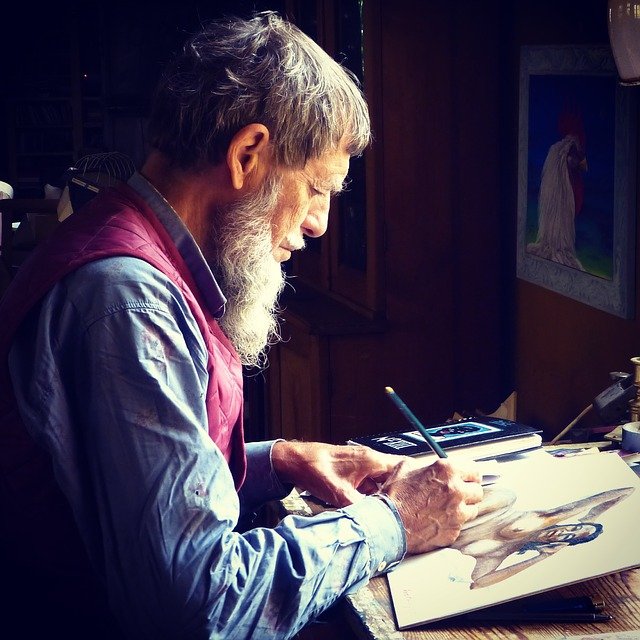Maria Shriver – author, journalist and activist for healthy aging – recently spoke to Tami Simon about the Radically Reframing Aging Summit that they are collaborating on to promote a balanced view of aging. Maria is the founder of Women’s Alzheimer’s Movement (WAM) which she established after her mother died of Alzheimer’s and following her awareness that two thirds of people living with Alzheimer’s or Dementia in America are women and the same percentage of carers for these sufferers are also women. Maria was conscious that there was a lack of research and education about women’s Alzheimer’s and she set out to address this deficiency by funding research and education about Alzheimer’s management and prevention through the Movement which also engages in advocacy.
In the interview podcast with Tami Simon, Maria discussed several topics that will be covered in the Summit and explained some of the background to bringing together a range of “groundbreakers” drawn from many fields including performers, neuroscientists, medical professionals, psychologists, and entrepreneurs – all of whom have broken through the mythical “age barrier” to achieve outstanding results in work and life in their later years.
Fundamental to the Summit is the realisation that there are lots of myths about aging and unhelpful “narratives” that disempower people from achieving a healthy and productive life as they grow old. While numerous narratives exist for early life up to and including age 40 (e.g. establishing a career, getting married and having children), there is very little in terms of positive narratives about aging and the later years of life. One of Maria’s goals is to establish new “aging narratives” through the words and example of “groundbreakers”, some of whom are presenters at the Summit.
Some lessons from the groundbreakers
In the course of the podcast interview, Maria highlighted some of the key insights and lessons gleaned from the groundbreakers and she identified Tami Simon as one of them [Tami established her multimedia company Sounds True in 1985 to promote mindfulness, mental health and spirituality in business and now has over 600 podcast interviews with leaders in these fields]. The insights and lessons cover areas such as the following:
- Reframing the aging narrative – the problem with the mainstream aging narrative is that it induces fear and prevents proactive actions to live later years in a meaningful, healthful and optimum way. The focus on deterioration with aging, instead of potentiality, induces fear about the future and the possibility of chronic ill-health, Alzheimer’s and loneliness. People become fixed in their ways, lacking initiative in dealing with their health and happiness. Maria is determined to promote positive stories about aging and change the dominant narrative. She points out that the groundbreakers presenting in the Summit proactively work on their mind, their body and their overall frame of mind. They age consciously – reframing aging so that they experience health and happiness. They work to achieve a designer future.
- Reframing retirement – the old narrative about retirement involved finishing a career and engaging in some hobbies while leading a relatively sedentary life. Reframing the retirement narrative involves a change in mindset that views the best years of life ahead, rather than behind. Groundbreakers live a life that inspires themselves and others. They choose to work on what matters to them (something that they are passionate about); what “speaks to them” at the time (given their life experience, skill set and lessons learned); and what brings them joy, happiness and fulfillment. They are able to flourish, enrich their life and deepen their life experience. Pursuing a purpose that energizes them and enables them to tap into their creativity. My brother Pat was an example of this when in his early 70’s (until he was 81), he started “virtual walking” (covering more than 25,000 kilometres) to raise funds for his aged care centre, Sinnamon Village. Maria also shares the story of a woman who was retired by her law firm (because she was 60!) and went on to become a full-time art instructor at an Art School (a long-held dream of hers). We are able to rewire and, like super-agers, pursue a life energised by a purpose and mission, access our creativity by challenging ourselves and adopt a mindset that sees ourselves as active and healthy. The principle of changing the retirement narrative is also captured in Bob Bradshaw’s book, Don’t Retire to Expire: “Once you wake up, everything else is optional”.
- Alzheimer’s prevention – given her family history, Maria was very determined to prevent Alzheimer’s, not only for herself, but also for the wider community through her Women’s Alzheimer’s Movement (WAM). She recognised that the presence of Alzheimer’s in your parents is not a major determinant of whether you will experience Alzheimer’s or not – there are other factors such as the way you live that have a greater influence. The Harvard Medical School in their report, Alzheimer’s Disease: A guide to diagnosis, treatment and caregiving, confirms the view that the major determinant of Alzheimer’s is lifestyle, not family history. In the podcast, Maria shared what she does personally to ward off Alzheimer’s in line with current research into Alzheimer’s prevention and what is beneficial for a healthy brain and heart. She explained, for example, that she exercises, tries to get adequate and quality sleep, reduces stress in her life (where possible), sets about learning new things and watches her diet and nutrition (no longer for weight-loss reasons but for the health of her mind and body).
- Reframing life transitions – Maria highlighted the constant need for adaption in life as we experience periods of transition, e.g. marriage breakup, loss of a job, children leaving home, extended marriages or establishing a new relationship in later life. Many of these transitions involve reframing one’s identity (e.g., identity changes because you are no longer a carer, paid employee of an organisation, or a provider of a home for your own children). There can be a feeling of loneliness with the “empty nest” or a sense that you are “not needed anymore”. The feelings of loneliness can be compounded by the death of a partner, close relative or friend. Maria suggests that to make the transition we need to respect our feelings and face them while trying progressively to figure out a way forward for ourself. She maintains that grief is a real challenge as we age because we lose people and, as a result, grief is an inevitable accompaniment of the aging process. Jenée Johnson provides some sound advice on coping with grief.
- Reframing death and dying – as we age and get closer to our death,it is natural to fear dying and to avoid conversations about this inevitable experience. However, many mindfulness experts encourage meditating on death as a preparation for dying. Maria informs herself about the dying process through her journalistic stories on near death experiences and the Hospice Movement. She maintains that it is an ongoing challenge for all of us to work out “how to live well and how to die well”. Maria contends that regrets are normal when we die and that we should die with as few regrets as possible through feeling that we have made the most of our life and used our gifts to enhance our own life and that of others. Franks Ostaseski, an expert in the process of dying and death, suggests that we go one step further when thinking about past regrets. He argues that we should replace regret with remorse so that we are motivated to do, and say things, differently when we reflect on what we have done or said, or failed to do or say.
Reflection
Maria points out tha t different cultures (such as African Americans) have a much more positive view of aging than Western society and respect the wisdom of their elders and, accordingly, treat older people with much deference and a wholesome respect. I found even in Italy, for example, that older people were highly respected (to my surprise, having men and women of all ages offering their seat to me on a tram, even when they were sitting further away from me on the tram – I was in my early 70’s at the time).
Maria suggests that it is critical that we have the conversation in public about aging and its attendant challenges and opportunities. People in Western society have suffered in silence in the past and been subjected to the limiting, prevailing mindset about aging. For example, Maria’s interviewer, Tami, mentioned the challenge of going grey as a woman and the pressures to die her hair a different colour (which she resisted, being a groundbreaker in lots of ways). Maria also encourages us to write about our fears, to get them outside our head and onto paper. She has found that this serves to reduce the fear and related stress and enables her to take appropriate action.
People in chronic pain have additional challenges as they age. Maria expressed empathy and compassion for people in this situation. She stressed the need to express gratitude at each stage of life for what we have and are able to do. In being grateful for our current capabilities, both mental and physical, we are more likely to care for them and develop them, rather than take them for granted. We are also more likely to be compassionate towards others who lack our capabilities because of some form of disability.
Maria shares her own life experiences, lessons and meditation practices in her book, I’ve Been Thinking…:Reflections, Prayers and Meditations for a Meaningful Life. She also expands on the book’s insights through a regular podcast, Meaningful Conversations, where she interviews people she admires and explores life’s challenges and the “art of self-invention”.
As we grow in mindfulness through listening to podcasts, reflecting on our own life and engaging in meditation and other mindfulness practices, we can become more aware of our limiting narratives, be more proactive as we age and tap into our creative energy to pursue a meaningful and fulfilling life purpose.
_____________________________________
Image by annayozman from Pixabay
By Ron Passfield – Copyright (Creative Commons license, Attribution–Non Commercial–No Derivatives)
Disclosure: If you purchase a product through this site, I may earn a commission which will help to pay for the site, the associated Meetup group, and the resources to support the blog.


